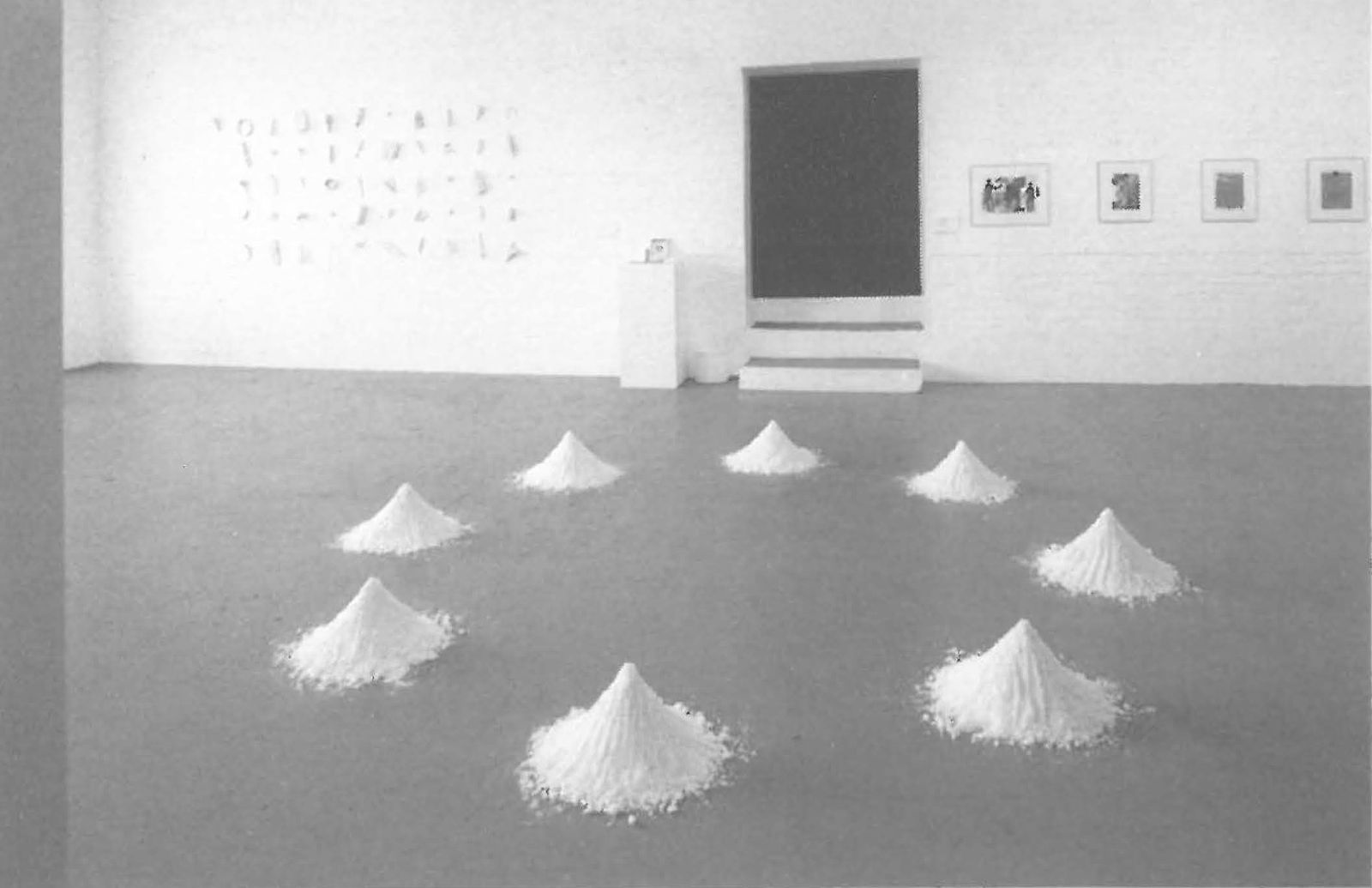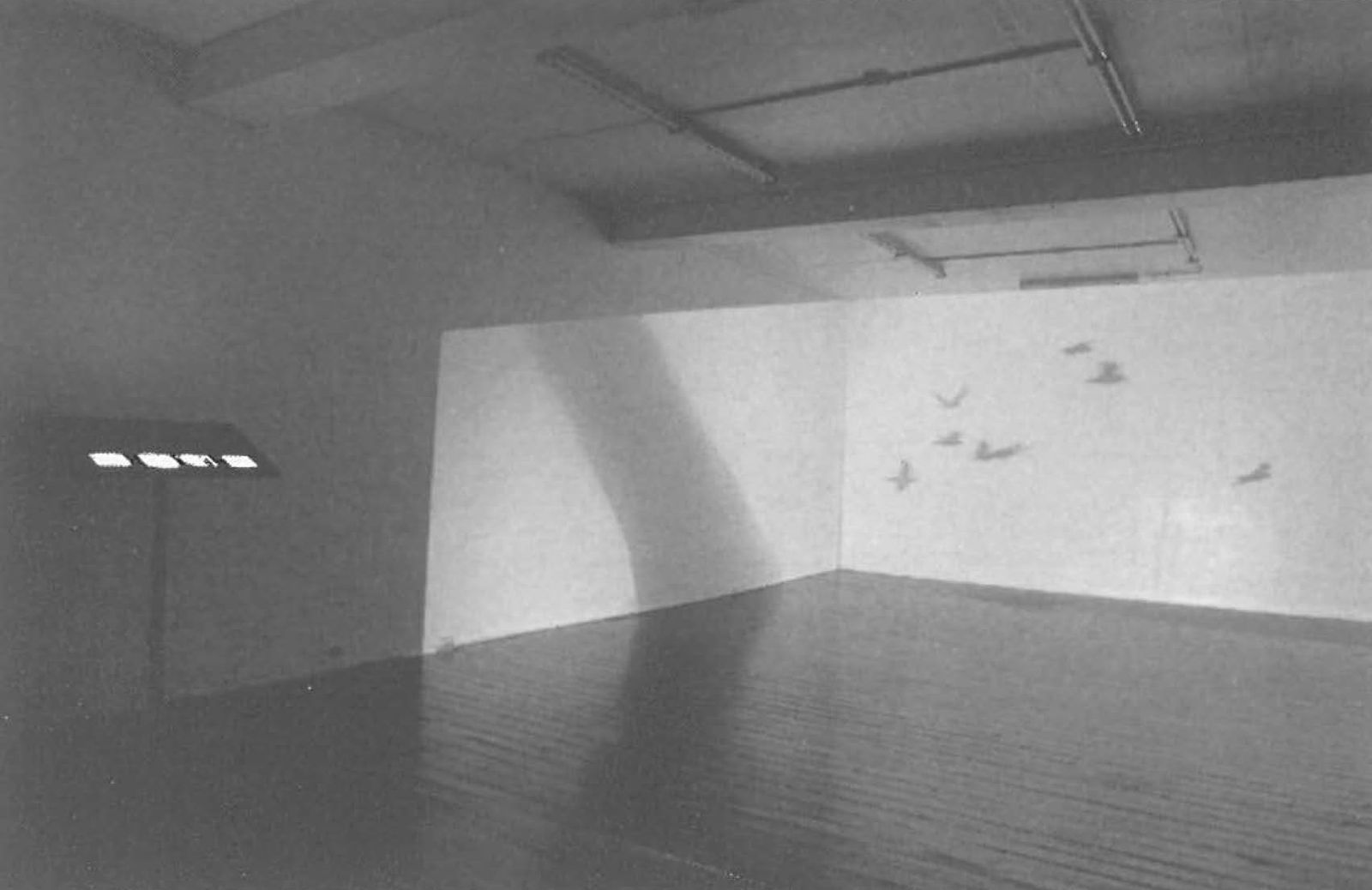
Exchange projects between artists, curators and museums in South East Asian areas have become an important aspect of contemporary art and curatorial practices in this region over the past decade. Another Landscape: History/Life/Language is a creative cultural exchange project between three female artists from the Asia Pacific area: Judith Wright (Brisbane, Australia), Nalini Malani (India) and Kaoru Hirabayashi (Japan). This three-part exhibition was curated by Emiko Namikawa from Gallery Lunami (Tokyo), and began in Japan in 1998, developing further in Bombay, and concluding at the Institute of Modern Art in April 2000.
The artworks in Another Landscape reflect on those aspects of life that may be described as fundamental – life, death, the quest for spirituality and the desire for meaningful exchanges between people. Although Emiko Namikawa's curatorial rationale has a romantic premise to it, asserting that the artists reinvestigate history, language and life from a spiritual perspective, they also explore how human relationships with nature, theories of progress and people of different cultures inform our understanding of the world.[1]
One of the outcomes of this exchange project is a collaborative book entitled Another Landscape (1999), that includes six images from each artist. Wright investigates connections between physical and psychological responses to different stimuli, Malani expresses the chaos, violence and decay of the world, while Hirabayashi explores links between language, spirituality and earthly existence. The book indicates how written language can evoke different responses in people from different cultures.
Judith Wright's video installation expresses her experience of having contact with different physical and cultural landscapes. For this exhibition, two video works are projected on different walls of the artspace. Skin traces the outer limits of a body as if it is an alien terrain. Filmed underwater, the body floats motionless like a corpse. There is an intimate and claustrophobic atmosphere to the work that reminds the viewer of their own mortality and how reliant we are on our senses to decode situations. Bombay is a stark video work that creates a sense of distance between the viewer and the projected landscape. Water appears again in this video as life by the river in Bombay is documentedthrough serene almost meditative, imagery. Sounds of traffic, sirens and people talking contrast with the calmness of the visuals. The juxtaposition of the two videos effectively represents the physical experience of being immersed in another culture, while symbolically expressing a sense of otherness.

Nalini Malani seems more concerned with depicting a human history of vice. Icons and text are layered to represent the human mind's potential for destructive behaviour and subconscious obsessions with death. Memory: Record/Erase (1999) is a two-part work comprising a short looped video and 30 colour laser print stills displayed in a grid formation. The video begins silently with text from a newspaper article rolling up the screen. It tells of a factory worker who spent four years disguised as a man before it was discovered that she was a woman. Visuals emerge as slow morphing screens where simple icons are scribbled into existence then drawn over or erased. Malani captures the ephemeral and unreliable nature of memory and its complex relationship with processes of identity formation.
Pattern and repetition are features of Karoru Hirabayashi's work, combining images, found objects, salt and written text. The letters represent the Japanese writing system known as kana, the 51 phonetic symbols used to write the basic sounds in Japanese. 51 sounds: blessing of the sea includes small objects commonly found washed up on the beach (sticks, rocks, shells and bottles) that have been wrapped in tissue paper and painted with black text. The combination of text and found objects from the ocean may symbolise the fluxus of written and spoken language systems. Hirabayashi uses written language as an ancient iconic system that has a spiritual element to it.
The artists in Another Landscape appear to share an ability to produce artwork that is contemplative of physical and spiritual aspects of life. Despite what the title says, this is not just another landscape exhibition.
Footnotes
- ^ Emiko Namikawa, 'Discussion of "Another Landscape"', in Another Landscape: History/Life/Language (exhibition catalogue), Saito Memorial Kawaguchi Museum of Contemporary Art, Kawaguchi, 1998, p.32.












